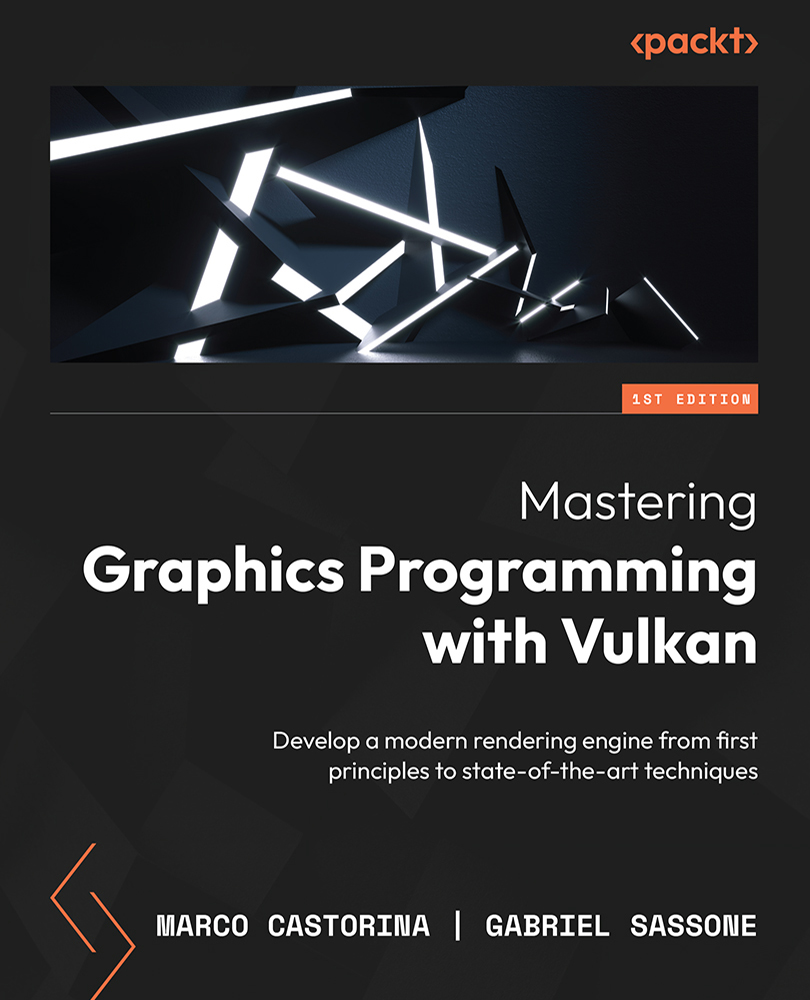-
Book Overview & Buying

-
Table Of Contents

Mastering Graphics Programming with Vulkan
By :

Mastering Graphics Programming with Vulkan
By:
Overview of this book
Vulkan is now an established and flexible multi-platform graphics API. It has been adopted in many industries, including game development, medical imaging, movie productions, and media playback but learning it can be a daunting challenge due to its low-level, complex nature. Mastering Graphics Programming with Vulkan is designed to help you overcome this difficulty, providing a practical approach to learning one of the most advanced graphics APIs.
In Mastering Graphics Programming with Vulkan, you’ll focus on building a high-performance rendering engine from the ground up. You’ll explore Vulkan’s advanced features, such as pipeline layouts, resource barriers, and GPU-driven rendering, to automate tedious tasks and create efficient workflows. Additionally, you'll delve into cutting-edge techniques like mesh shaders and real-time ray tracing, elevating your graphics programming to the next level.
By the end of this book, you’ll have a thorough understanding of modern rendering engines to confidently handle large-scale projects. Whether you're developing games, simulations, or visual effects, this guide will equip you with the skills and knowledge to harness Vulkan’s full potential.
Table of Contents (21 chapters)
Preface
Part 1: Foundations of a Modern Rendering Engine
 Free Chapter
Free Chapter
Chapter 1: Introducing the Raptor Engine and Hydra
Chapter 2: Improving Resources Management
Chapter 3: Unlocking Multi-Threading
Chapter 4: Implementing a Frame Graph
Chapter 5: Unlocking Async Compute
Part 2: GPU-Driven Rendering
Chapter 6: GPU-Driven Rendering
Chapter 7: Rendering Many Lights with Clustered Deferred Rendering
Chapter 8: Adding Shadows Using Mesh Shaders
Chapter 9: Implementing Variable Rate Shading
Chapter 10: Adding Volumetric Fog
Part 3: Advanced Rendering Techniques
Chapter 11: Temporal Anti-Aliasing
Chapter 12: Getting Started with Ray Tracing
Chapter 13: Revisiting Shadows with Ray Tracing
Chapter 14: Adding Dynamic Diffuse Global Illumination with Ray Tracing
Chapter 15: Adding Reflections with Ray Tracing
Index
